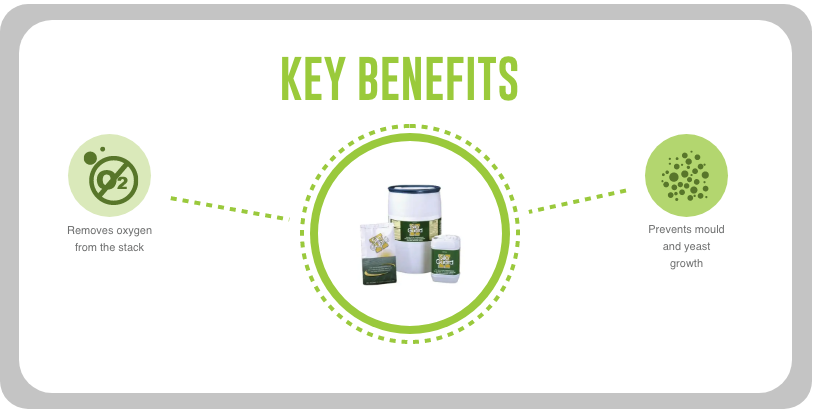Silo Guard® ii
Reduces yeast and mould growth

What to feed and when?
Application rate varied for crop type and DM% Applied during harvest
Why is DBC the Farmers Choice?
Fermentation begins within 21 days. Improves feed utilisation by up to 10%. Reduces dry matter loss by half. Preserves the quality of the silage and improves digestibility

